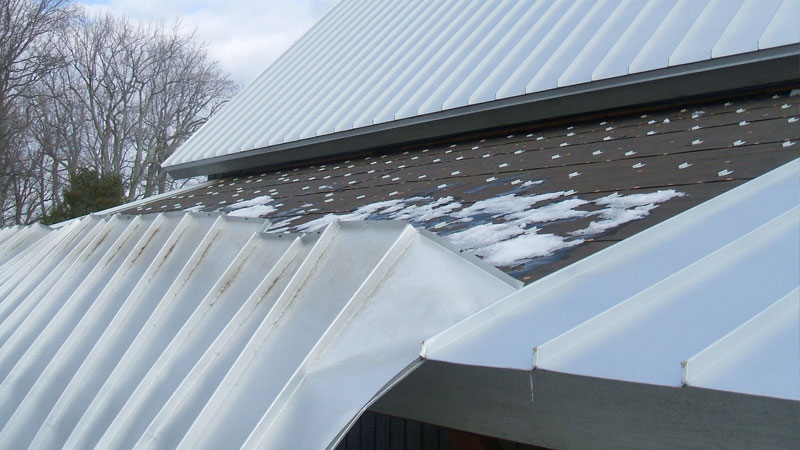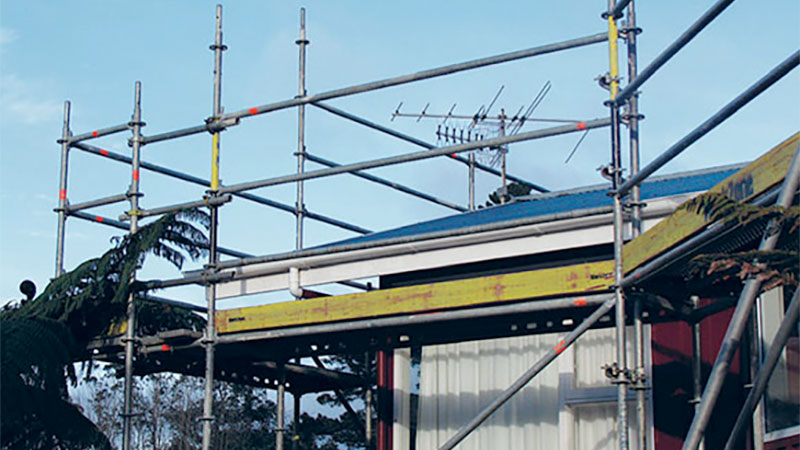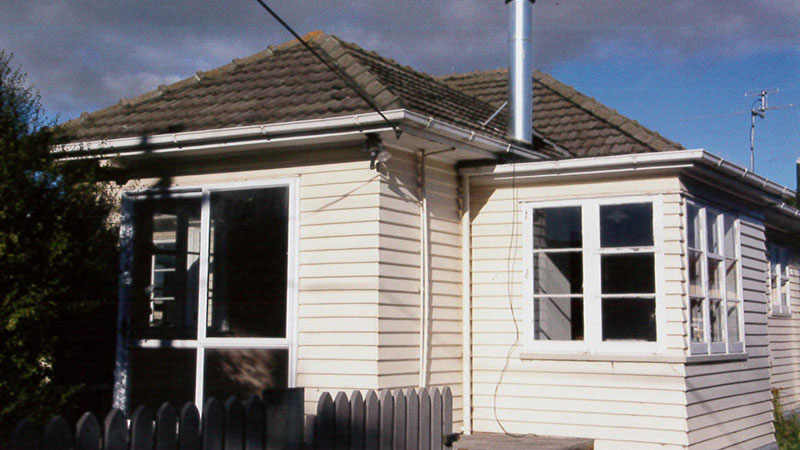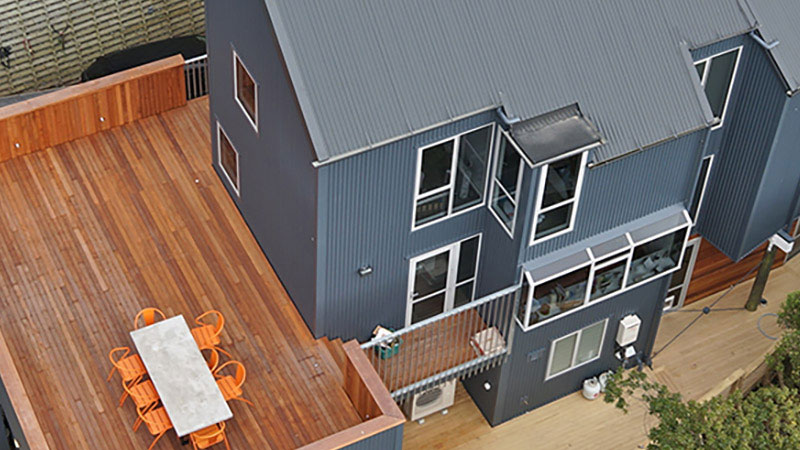With winter fast approaching it is important to take the time to ensure your roof and associated components are in good condition to withstand the many different weather scenarios, heavy rain, strong winds and snow.
Roofing:
Any roof leaks or other problems you experience with your roof during winter can be doubly difficult to deal with, since snowfall and cold temperatures make repairing roof issues even more complex than usual.
With that in mind, here are a few tips to follow to ensure you enjoy a leak-free winter
- Keep your roof clean – Debris is one of the leading causes of roof damage and leaks. Ensure that it is free of dead leaves, wayward branches, rubbish and other waste.
- Trim overhanging tree branches – If you have trees with branches that hang over your roof, have the branches trimmed. This will greatly reduce the amount of organic debris that ends up on your roof in the first place, making the need for roofing repairs less likely. It also helps lower the possibility of branches falling on or scraping the house in snow or heavy winds.
- Clean your gutters – Clean and check your gutters as per the section below.
- Remove snow if possible – To prevent roofing collapse and damage, remove snow from your roofing system as soon as possible. Use a snow roof rake or shovel to clear the snow off your roof.
- Upgrade your insulation – Good insulation can prevent some roof leaks. Although we don’t often get much snow in Canterbury some leaks can be caused by snow melting because too much heat escapes from the roof.
- Look for interior signs of leaks – Roof leaks will often reveal themselves as stains on your ceiling or as stains and wet areas in your attic. However, not all roofing problems are obvious and the absence of drafts or leaks doesn’t necessarily mean your roof is structurally sound.
- Inspect the condition of your shingles & flashings – Look for curled, cracked, loose or missing shingles from the ground. (Use binoculars if you need to!) Over time, exposure to the elements, as well as storm related debris can damaged your roof deck compromising the integrity of your roof shingles. If possible, check flashings and other penetrations, including around chimneys and exhaust vents. Be sure these areas are properly sealed against the weather.
- If in doubt, have a roof inspection done to ensure it will protect you during snow/ heavy rain / hail / strong winds.
Hiring a professional roofing company is advised. This way the inspector will ascend the roof and be able to examine its construction, flashings, vents and chimneys and will be able to determine the cause and recommend a solution.
Gutters:
Rain gutters represent an important piece of your homes defence against the elements. When it rains, your homes gutter handles the runoff from the entire roofing surface and drain it away from your home. This helps to protect your home’s siding, windows, doors and foundation from water damage.
Like any of your home’s many systems, rain gutter require maintenance and occasional repair. Here are a few tips to get started:
- Clear leaves and debris – Gutters and downpipes must be clear of leaves and debris to do their job. Clogged and jammed drain outlets lead to overflowing gutters and may even pull the gutters loose.
- Inspect the slop – Properly installed gutters are slightly sloped toward the downpipe, allowing water to drain efficiently. Improperly sloped gutters will result in pooling, which over time will corrode your gutters. An easy way to test the slop is by spraying water into the gutters with a hose. The water should flow smoothly toward the downpipe.
- Inspect for gutters that may have pulled away from the house – If water pools in your gutters for any reason, the weight of the water may, over time, loosen the fasteners and allow the gutter to pull away from the house. To check the integrity of your gutter system, an annual inspection is recommended.
- Check for leaks & holes – Using a garden hose, spray water on you roof to see if the gutters are leaking. Sectional rain gutters may leak at the seams. These leaks may be repaired with silicone caulking. Be sure to seal both the inside & outside of the gutter. Small holes can be easily repairs with roofing cement applied with a putty knife.
- Inspect the downpipes – Inspect your downpipes for any leaks or signs of excessive wear. If your downpipes are joined to fascia boards, ensure that they are firmly attached.
Wind and Hail damage:
High winds and heavy rain can be very destructive when it comes to residential & commercial property. High winds that accompany rainstorms or hail can be a leading factor of roof deterioration.
One thing you can do to mitigate this kind of damage is to schedule a roof inspection for your home soon after episodes of high winds. Roofing repairs related to high wind damage are among the most common types of roofing repair you will encounter as a homeowner.
Wind damaged is caused by negative air pressure providing uplifting forces around the perimeter of the roof and on the flashings. It may take more than one high wind event to create visible signs of damage, as these effects are cumulative. In a rain storm, rain driven by strong winds can enter a home from any open site, such as soffit vents and gable ends, as well as through improperly sealed windows & doors. Within a few days mildew and mould may develop leading to serious problems.
Another less common problem is hail. Depending on the size of the hail stones and the strength of the accompanying winds, shingles and flashings may be severely damaged. Signs of damage include missing granules and cracks in shingles as well as dents in flashings, metal vents and metal in roof valleys.
- If the storm produces hail, check for roof and siding damage. Hail damaged commonly comes in the forms of dimples, made by smaller chunks of hail that pound the outer layer of shingles
After a storm you must act quickly to prevent problems from worsening over time. It is important to make a thorough inspection of your roof before damage leads to bigger problems. Avoid getting on the roof, use binoculars or if necessary a ladder but again stay off the roof.
Here are some tips –
- Examine your roof carefully and note any missing, damaged or loose tabs or shingles. These are a sure sign of wind damage
- Look for cracks in shingles and areas where the shingles have buckled or curled
- Are there any areas where substantial amounts of granules are missing from shingles?
- Have any roofing nails been pulled up thereby causing shingles to loosen and nail punch through?
- Inspect multi-level roofs at intersections with walls to ensure nothing has opened where water can seep in
- Separation of flashings from chimneys, vents, skylights and attic fans might be too small to see but still lead to interior water damage. Check in the attic around these areas for signs of leakage.
- Inspect interior ceilings for tell-tale discolouration or bubbles in the all boards.
Working on a roof is dangerous and should only be done by qualified, licenced and insured roofing contractors.





